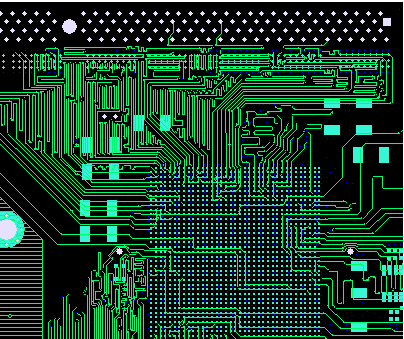Nowadays, there are many kinds of power supplies, but switching power supplies are commonly used. The relevant Layout experience is for your EE's reference. First, let’s take a typical application diagram of MPS’s classic hot-selling product MP1470, which can easily convert 12V to 3.3V/2A:
The layout of DC-DC is very important and will directly affect the stability and EMI effects of PCB products. The experience/rules are summarized as follows:
1. Handle the feedback loop properly. The feedback line should not go under the Schottky, don’t go under the inductor (L1), don’t go under the large capacitor, and don’t be surrounded by a large current loop. If necessary, add a 100pF capacitor to the sampling resistor. Stability (but transient will be affected a little);
2. The feedback line is rather thin than thick, because the wider the line, the more obvious the antenna effect, which affects the stability of the loop. Generally use 6-12mils line;
3. All capacitors are as close as possible to the IC;
4. The inductance is selected according to the capacity of 120-130% of the specifications in the specification, and it should not be too large, as it will affect the efficiency and transient;
5. The capacitance is selected according to 150% of the capacity of the specification. If you are using SMD ceramic capacitors, if you use 22uF, it is better to use two 10uF in parallel. If it is not sensitive to cost, the capacitor can be larger. Special note: If you use aluminum electrolytic capacitors for the output capacitors, remember to use high-frequency and low-resistance ones, and don’t just put a low-frequency filter capacitor!
6. Minimize the surrounding area of the large current loop as much as possible. If it is not convenient to shrink, use copper to become a narrow gap.
7. Do not use thermal resistance pads on critical circuits, they will introduce excess inductance characteristics.
8. When using the ground plane, try to maintain the integrity of the ground below the input switching circuit. Any cutting of the ground layer in this area will reduce the effectiveness of the ground layer, and even signal vias through the ground layer will increase its impedance.
9. The via hole can be used to connect the decoupling capacitor and the IC ground to the ground plane, which can minimize the loop. But it should be kept in mind that the inductance of the vias is about 0.1~0.5nH, which will vary according to the thickness and length of the vias, and they can increase the total loop inductance. For low-impedance connections, multiple vias should be used. In the above example, the additional vias to the ground plane will not help reduce the length of the C IN loop. But in another example, since the path on the top layer is very long, it is very effective to reduce the loop area through vias.
10. It should be noted that using the ground plane as a path for current return will introduce a lot of noise into the ground plane. For this reason, the local ground plane can be separated and connected to the main ground through a point with very low noise.
11. When the ground wire layer is very close to the radiation loop, its shielding effect on the loop will be effectively strengthened. Therefore, when designing a multi-layer PCB, a complete ground layer can be placed on the second layer so that it is directly below the top layer that carries a large current.
12. Unshielded inductors will generate a large amount of magnetic leakage, which will enter other loops and filter components. In noise-sensitive applications, semi-shielded or fully-shielded inductors should be used, and sensitive circuits and loops should be kept away from the inductors.
Solving EMI problems can be a very complicated matter, especially when facing a complete system without knowing where the radiation source is. With the basic knowledge about high-frequency signals and current loops in switching converters, plus an understanding of the performance of components and PCB layouts under high-frequency conditions, combined with the use of some simple self-made tools, it is necessary to It is possible to find the radiation source and low-cost solutions to reduce the radiation, so as to easily solve the EMI problem.